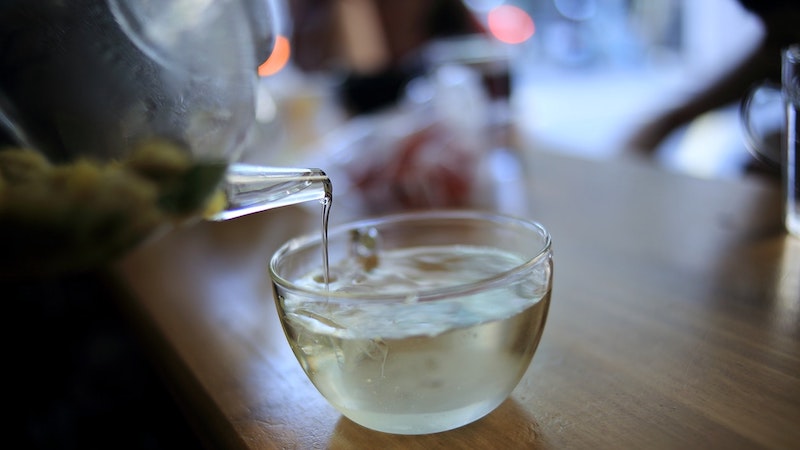Producing Tea
Episode #5 of the course The science of tea by Lukasz J. Binkowski
Welcome to the fifth lesson of the course.
Today, we’ll look at the way the tea is produced and try to find the differences between the main types of tea. We will trace the path from a tea plant in East Asia to a delicious cup of tea at your home. Let’s begin!
Harvesting and Withering
A tea plant needs to be at least three years old before its leaves may be harvested and the terminal sprouts (called flushes) may be picked.
The flushes consist of two or three leaves that are still developing, so they are very rich in the compounds that give the tea its flavor and taste. Flushes are harvested every week or two (in regions like China, Sri Lanka, and Kenya, the vegetation season lasts the whole year), by hand (which has a positive effect on the tea quality) or mechanically (which is more cost effective).
Harvesting is a crucial step in the tea production, and it was strictly regulated in China during the times of Tang Dynasty (618-907 AD). At those times, only young, unmarried girls were allowed to take part in harvest. Their hands needed to be clean and their nails well-manicured. Even the diet of the girls was regulated and had to be free of onions, garlic, and other strong-smelling foodstuffs to limit the possibility of transferring the odor to the flushes. In addition, the girls used silk gloves with the fingers cut off and had jugs of water hanging from their waists to rinse their fingertips there.
Today, this tradition is not so strictly followed, but the harvesting of high-quality teas is still very laborious process. To harvest 0.5 kg of fresh leaves, the picker needs to harvest 2,000 leaves (give or take, since it depends on the type of tea and its moisture). Specialist pickers are able to harvest up to 34 kg of fresh leaves per day.
The processing of the leaves varies significantly for different teas, and this stage determines the type that the tea ultimately obtains.
The harvest yields leaves that are rich in water (water constitutes between 70% and 80% ). The next step after harvesting is withering (also called wilting). It is a type of drying during which the water content of the leaves drops to 20%-40%. The duration of withering varies and may constitute from two to even 20 hours.
Rolling and Shaping
The next step of the process is the rolling and shaping of the leaves. The aim is to destroy the cell walls inside the leaves and release the enzymes and other compounds from the cells, which may be later found in the infusion.
Rolling should be done very carefully because the compounds mentioned in the previous lessons should remain in the leaves. Traditionally, rolling is done by hand, but machine-rolling in baskets is also acceptable.
In addition, the CTC (crush, tear, curl) method was developed for bigger productions of low to moderate-end quality teas. It destroys the structure of the leaves, so as a result, the leaking juice is sprayed back onto the leaves. This method is not used for high-quality teas, since it’s not a natural way of rolling, so producers usually call teas produced without the CTC method orthodox teas.
Oxidation
The following step is probably the most important in terms of defining the type of tea. It is known as the oxidation stage but is sometimes misleadingly called fermentation. Fermentation is done only in specific tea production where a fungus leads transformation of compounds.
During this step, the enzymes and compounds available in leaves are oxidized by the oxygen in the air. Depending on the recipe and type of tea, this stage takes between 30 minutes and a couple of hours. Some types of tea do not undergo oxidation at all.
Firing and Sorting
Finally, oxidized tea goes to the firing stage, during which it is heated up to 80°C (176°F) for any time between a couple of minutes and an hour. Alternatively, some tea producers use steaming (similar to cooking with steam). The aim here is to stop all the active enzymes and the oxidation process. Leaves are then sorted based on their size, which can be done by hand (for high-quality teas) or by machines. When sorted, tea is ready to be packed and shipped.
The duration of each stage depends on the type of tea being produced. We will discuss this in the next few lessons.
Until tomorrow,
Lukasz
Recommended book
Tea: The Drink that Changed the World by Laura C. Martin
Share with friends

